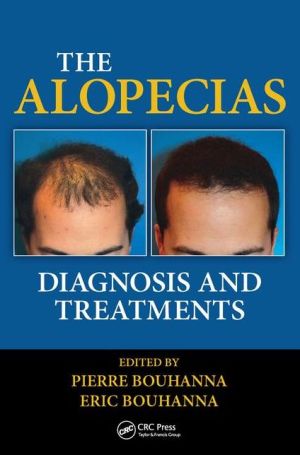The Alopecias: Diagnosis and Treatments ebook
Par enyeart charles le mardi, avril 26 2016, 06:50 - Lien permanent
The Alopecias: Diagnosis and Treatments. Pierre Bouhanna

The.Alopecias.Diagnosis.and.Treatments.pdf
ISBN: 9781482212754 | 255 pages | 7 Mb

The Alopecias: Diagnosis and Treatments Pierre Bouhanna
Publisher: Taylor & Francis
Androgenetic alopecia: diagnosis and treatment with a focus on recent genetic implications. Treatment Oral contraceptives (OCs) These can lower free testosterone levels by about half. Alopecia areata is a common hair loss condition that seems to be related to immune system dysfunction. Alopecia Areata: news on diagnosis, pathogenesis and treatment. Alopecia is the partial or complete loss of hair—especially on the scalp—either in patches Certain types of alopecia respond more readily to treatment. The hair bulge remains healthy and the hair follicle is able to regenerate with effective treatment. Hair loss — Comprehensive overview covers causes, symptoms and treatments. Cicatricial (scarring) alopecias: an overview of pathogenesis, classification, diagnosis, and treatment. Providing an overall evaluation/diagnosis with treatment options Scarring alopecias have loss of follicular ostia, or atrophy. Conventional treatments of hair thinning includes drugs therapy and hair Keywords: alopecia, cyclic phase, diagnosis, factors contributing, treatment. Alopecia Areata information including symptoms, diagnosis, misdiagnosis, treatment, causes, patient stories, videos, forums, prevention, and prognosis. Cicatricial (scarring) alopecias: An overview of pathogenesis, classification, diagnosis, and treatment on ResearchGate, the professional network for scientists. Although the pathogenesis of alopecia may seem complicated, if one one can easily diagnose and treat most cases of alopecia seen in family practice. Scarring alopecia affects both men and women, and it can cause irreversible damage of the hair follicles, This article describes its definition and treatments. LLP is a primary cicatricial alopecia whose diagnosis is supported in the early stage by both clinical and histopathological findings.